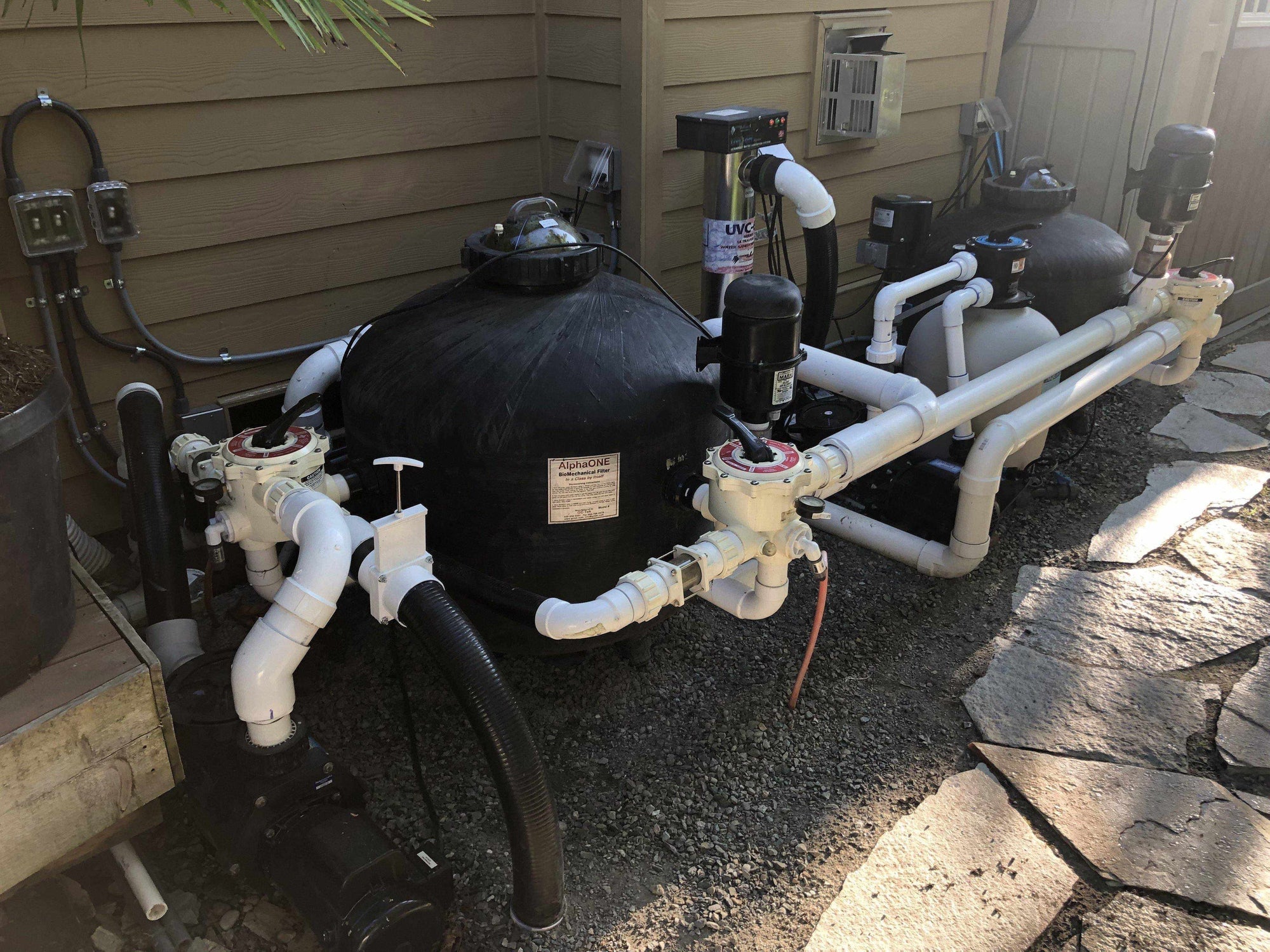To ease the assessed situations in the previous article, there are things you can do to reduce risk and make your pond more resilient. This may eliminate the risk or give you more time to address the issue.
Multiple Pumps: Yes, you can buy a single pump that can take care of all your pond needs from the very small to ginormous pumps. But is that a good idea? “When” it fails, you have no pump. If you don’t have plants or animals, the risk is less, but the water will become nasty. Instead, design the system with two or more pumps. If you lose one or turn it off for maintenance, the other can run the system on its own. Oversize your pumps – the base costs of a pump model will be the largest amount, but the GPH differences will be minor as you go up in GPH sizes. Lastly, you could have a manual or automated switched pump that is plumbed into the system which when switched on would continue to filter and add oxygen to the water (cycle on occasion to ensure it is “ready” in an emergency). This could be hooked to either a manual switch, or a relay which in turn is attached to flow switches on another pump (or multiple pumps).
Multiple Components: If a single filter, aerator or UV clarifier is taken offline due to maintenance or damage, you may want to consider always having a second unit either standing by, or plumbed to do some of the work. This avoids single points of failure. It may be a good idea to plumb those separate components with separate supply lines (in other words, don’t share a single line). Like pumps, oversize the component pair so that one can do an adequate job by itself for a period of time. If you have a high-dollar expansive system, consider placing these components in different locales. This avoids a single issue taking out both components; perhaps a tree falls and takes out a filter and line – the other is safe.
Multiple Circuits: Putting everything on a single circuit with a single GFI is risky. If the GFI trips, all electrical components on that circuit stop. If you have multiple pieces of equipment and one circuit, consider dividing the circuit into two or more GFIs with their own downstream outlets (better). Best though would be to have multiple circuits (which you may need anyway if you have lots of load due to having lots of equipment). In both situations (the multiple GFIs or multiple circuits), always diversify. Run through which components would stay on or fail depending when designing. Even small systems with limited equipment, always diversify. If you have a single pump, consider placing aerators on another circuit so that if the pump circuit trips, the aerator continues. Use a qualified electrician and follow all codes.
Multiple Water Sources: Create a reservoir of treated water matching or continually mixing with your main feature. Most pond systems have no “extra” water meaning they run from the main pool to component and back again. If you have the room, consider a secondary feature which increases the volume of the system. In the event of a major leak, fish could be transferred to this feature and using valves isolated from the damaged component or pond. This pond doesn’t have to have fish and can be connected with a crossover pipe allowing the water to be the same as the main feature (but placed high up so that it can’t drain this feature out). If you don’t have the room, install the reservoir below grade (a cistern).
Multiple Layers of Safety: To avoid harm, ensure you place layers of protection into the water feature. Out of site is out of mind. Do not make your water feature visible from public view. Use landscaping to make it secluded. Physical barriers between the water feature and both public access and internal access should be used (fencing, hedges, berms, nets, gates and locks or a combination of these). With a little planning, you can make the barriers unobtrusive. Use a barrier of surveillance, sensors and alarms as a last line of defense. Lastly, ensure your homeowners insurance is adequate for having a pool on premises. With electrical, always ensure to protect everything with GFI circuits (including outlets where long extension cords may be run over to the water feature). This way, tools or other powered devices are still protected.
Previous Article: Pond System Resilience – Risk Assessment
Next Article: Pond System Resilience – Mitigation
Table of Article Contents and Disclaimer

